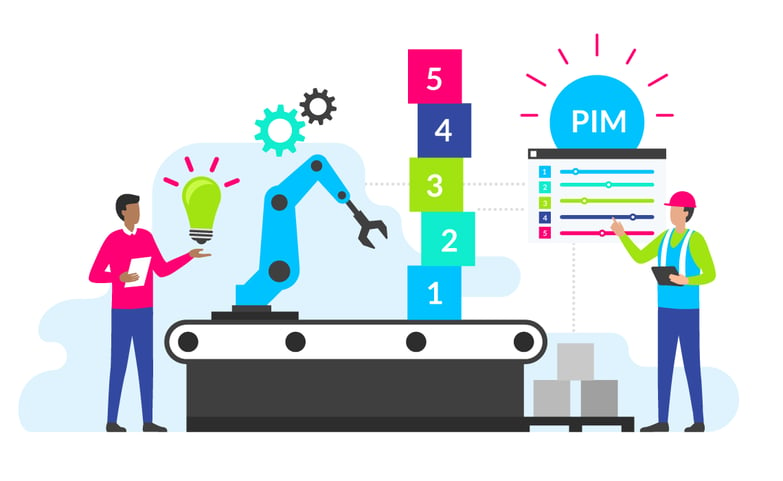The manufacturing sector faces turbulence worldwide as a looming recession, rising geopolitical tensions, and market volatility hamper performance and growth. Building resilience is now a mission-critical concern for brand manufacturers dealing with unprecedented supply chain disruptions, inventory shortfalls, labor shortages, and shifting consumer behaviors. Despite the clouded outlook, almost 80% of manufacturers have increased spending on digital technologies in the last two years, with a similar number planning to do so in the next two.
A company’s capacity to adapt to a changing business environment and innovate to survive unexpected events plays a key role in determining its ultimate success. Those who proactively invest in a digital enablement strategy to drive value from data and improve performance will reap the benefits. Industry leaders must promote innovation in areas that will improve operations, accelerate production, improve the quality and flexibility of manufacturing processes, and respond successfully to consumers' changing needs.
Brands on the path to creating a resilient industry rely heavily on digital transformation. That’s why 95% of manufacturing companies agree that digital transformation is essential to their future success. It promotes a culture of organizations doing more with less as they become more efficient with resources. In this article, we’ll look at what digital transformation means for manufacturers, how they can use technology-based automation to improve their operations, and why data is at the center.
What is digital transformation in manufacturing?
Manufacturing companies have in the past relied on traditional business models and methodologies such as benchmarking, total quality management (TQM), and Kaizen. These approaches helped companies achieve only incremental improvements in specific areas. But they were unable to access all the necessary information, handle substantial amounts of data, and analyze it effectively. Now, a growing number of businesses require better infrastructure to function at a truly smart level, using digital technologies to create or improve business processes, culture, and customer experiences. Any process that can be made digital — may it be migrating legacy systems to the cloud, purchasing materials, or using third-party service providers — is considered.
With the rise of Industry 4.0, manufacturers are automating production lines and increasing efficiency through digitization and datafication. As manufacturing companies step up their digital transformation efforts, they must make targeted and cost-effective investments in new tools and technology to see meaningful returns. The right applications of technology, including the Internet of Things (IoT), artificial intelligence (AI), cloud computing, and 3D printing, have the potential to help manufacturers overcome critical constraints. To remain competitive, by 2020, nearly a quarter of top-tier manufacturing businesses had adopted AI-based solutions, and by 2021, this increased dramatically to 76%.
Why is digital transformation in manufacturing key to success?
The benefits of digital transformation in manufacturing are wide-ranging. But for most companies, digital transformation requires a shift from traditional thinking to a more experimental approach. Brands like Reebok are already transforming the industry with new sophisticated software and robotics that creates shoes with a 3D printing process. Ultimately, successfully implementing a digital transformation strategy in manufacturing requires combining the right technology, a supportive culture, and a focus on data. Let’s look at the main benefits digital transformation can bring:
- Resilient supply chains
Supply chain resilience requires visibility, and digital solutions are crucial to achieving transparency. Implementing IoT tracking solutions across the supply chain is key. These devices provide real-time updates on product or part locations, conditions, and other factors. Businesses can then run this information through predictive analytics engines which will make it far easier to see and react to potential disruptions, mitigating shortages and delays. - Lower operating costs
Having a system in place that knows how to automatically interpret data and consolidate it in digestible chunks can drastically reduce costs across all departments. Connected machinery offers a range of benefits to manufacturers such as diagnosing problems before they arise and planning maintenance during downtime for gains in productivity. By digitizing information-intensive processes, costs can be cut by up to 90%, allowing companies to free up resources and focus on core business objectives. - Personalization and customer centricity
One of the biggest challenges for manufacturers is personalizing products at scale. 40% of customers are willing to spend more than planned when the shopping experience is highly personalized, but they desire the same responsiveness and speed from B2B companies as they do when buying generic products. Accomplishing this requires an agile business model and investment in data-driven technologies that will give customers the ability to choose their desired options, and companies the chance to manufacture and deliver them quickly, while still maintaining a cost-effective operation. - Higher productivity
One of the biggest advantages of digital transformation in manufacturing is higher productivity. Manufacturers are leveraging hyperautomation to remove human errors from their manufacturing processes as smart machines minimize downtime by optimizing themselves based on previous data or giving notice when something needs to be repaired. Hyperautomation involves integrating artificial intelligence (AI) and machine learning (ML) to augment human activity. - Resiliency
Resiliency is crucial to thriving in challenging circumstances. Manufacturers must be able to anticipate and respond to challenges to stay ahead of the curve. Digital technologies help manufacturers by operating remotely, harnessing flexible automation, and connecting the supply chain with a cloud-based infrastructure. These technologies lead to predictive maintenance, self-optimization of processes and a new level of efficiency, adaptability, and responsiveness that was not previously possible.




